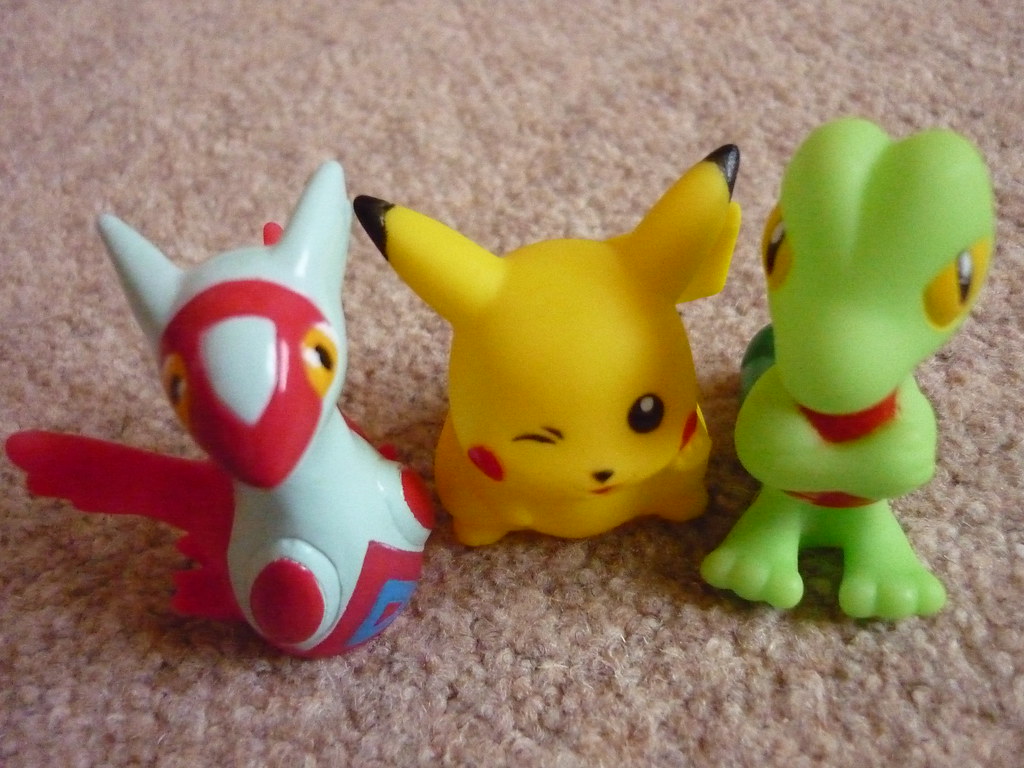Where Was Pokemon Made
Where Was Pokemon Made: Exploring the Origins of the Global Phenomenon
Pokemon, the beloved franchise that has captured the hearts of millions around the world, has become a cultural phenomenon since its inception. The franchise, which includes video games, trading card games, an animated television series, movies, and various merchandise, has a rich history that dates back to its creation in the 1990s. In this article, we will delve into the origins of Pokemon and explore where it was made.
The Birth of Pokemon
Pokemon was created by Satoshi Tajiri and Ken Sugimori, who founded Game Freak, a Japanese video game development company, in 1989. Tajiri, a passionate insect collector during his childhood, drew inspiration from his hobby and wanted to create a game that would allow children to experience the joy of collecting and trading creatures.
After several years of development, Tajiri and Sugimori released the first Pokemon video games, Pokemon Red and Green, for the Game Boy handheld console in Japan in 1996. The games were an instant success, captivating players with their unique gameplay mechanics and the concept of capturing and training creatures known as Pokemon.
The Role of Nintendo
While Game Freak was responsible for the development of Pokemon, it was Nintendo, the renowned Japanese video game company, that played a crucial role in bringing the franchise to a global audience. Nintendo published the Pokemon games and provided the necessary resources and marketing expertise to make Pokemon a worldwide phenomenon.
Under the leadership of Nintendo’s then-president, Hiroshi Yamauchi, Pokemon was introduced to international markets. The games were localized and released as Pokemon Red and Blue in North America and Australia in 1998, followed by Europe in 1999. The success of the games led to the creation of an animated television series, trading card games, and a wide range of merchandise.
The Influence of Japanese Culture
One cannot discuss the origins of Pokemon without acknowledging the significant influence of Japanese culture on the franchise. Pokemon draws heavily from Japanese traditions, folklore, and aesthetics, which have contributed to its unique charm and appeal.
For example, many Pokemon are inspired by creatures from Japanese mythology and folklore. Pikachu, the franchise’s iconic mascot, is based on the mythical creature known as a “tanuki,” a mischievous raccoon dog often depicted with electrical powers. Other Pokemon, such as Gyarados and Ninetales, draw inspiration from legendary creatures like dragons and foxes found in Japanese folklore.
The Global Impact of Pokemon
Since its introduction, Pokemon has become a global phenomenon, captivating audiences of all ages and transcending cultural boundaries. The franchise’s success can be attributed to several factors:
- Innovative Gameplay: Pokemon introduced a unique gameplay concept that combined elements of role-playing, strategy, and collection. The ability to capture and train a diverse range of creatures appealed to both casual and hardcore gamers.
- Engaging Storytelling: The Pokemon games and animated series feature compelling narratives that follow the adventures of trainers as they strive to become Pokemon Masters. The stories emphasize friendship, teamwork, and personal growth, resonating with audiences worldwide.
- Social Interaction: Pokemon encouraged social interaction through its trading card game and multiplayer features in the video games. Players could connect with friends and strangers to trade Pokemon, battle, and collaborate, fostering a sense of community.
- Marketing and Merchandising: Nintendo’s strategic marketing campaigns and the extensive range of Pokemon merchandise, including toys, clothing, and accessories, helped solidify the franchise’s popularity and create a global brand.
Conclusion
Pokemon, a franchise that originated in Japan, has become a global sensation, captivating millions of fans worldwide. The creative vision of Satoshi Tajiri and Ken Sugimori, combined with Nintendo’s support and the influence of Japanese culture, has resulted in a phenomenon that continues to thrive decades after its inception.
From its humble beginnings as a video game, Pokemon has evolved into a multi-media franchise that encompasses various forms of entertainment and merchandise. Its enduring popularity can be attributed to its innovative gameplay, engaging storytelling, emphasis on social interaction, and strategic marketing efforts.
Whether you’re a long-time Pokemon fan or new to the franchise, the origins of Pokemon provide valuable insights into the power of creativity, cultural influences, and the ability to create a global phenomenon that transcends borders and generations.


